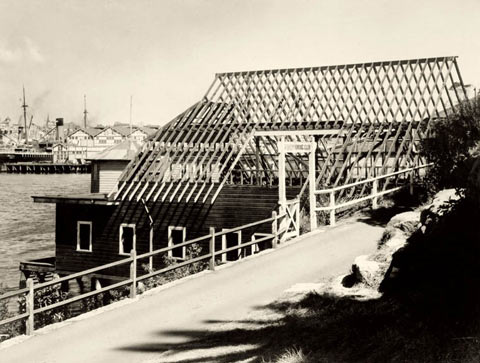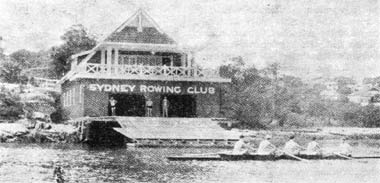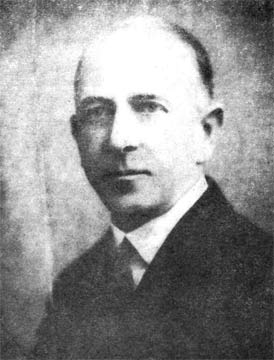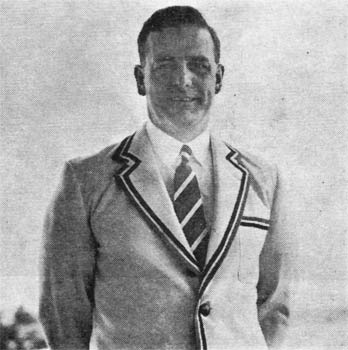
Sydney Rows
A Centennial History of the Sydney Rowing Club, 1970, by A L May
Table of Contents
Chapters
- Preliminaries: before 1870
- Foundations: 1870-1880
- New Clubs: 1880-1890
- The Amateur Question: 1890-1900
- Sydney on Top: 1900-1910
- Henley and War: 1910-1920
- Pearce and Mosman: 1920-1930
- Financial Problems: 1930-1940
- War and Wood: 1940-1950
- Strength and Stability: 1950-1960
- On Top Again: 1960-1970
Appendices
9. War and Wood: 1940-1950
Rowing was put aside while Australia was at war. Membership of all clubs showed a big decline due to the enlistment of oarsmen in the services. All championship rowing and sculling events, as well as the interstate competition, were postponed for the duration of the war and the number of regattas was much reduced. The premiership and junior championship were replaced by a modified point score competition.
For those left behind, the main emphasis was on keeping the sport alive until normal operations could be resumed. The number of members and past members of SRC enlisting numbered close to 200. The 1943/44 annual report noted that "rowing activity within the Club is at a very low ebb, but the fifth year of the war finds the Club's organisation still intact and its financial standing improving".
A dozen members were, unfortunately, among those who failed to return. They included Basil Martin, Bill Callaway, Roy Rosevear, Doug Bain and Brin Jay.
In rowing events during the war period, Haberfield predominated and the club also won the first renewed premiership in 1948/49. Sydney finished second that year, and won both the competitions in 1949/50 to finish the decade on a high note. The successes of Merv Wood in the sculling field also placed Australian rowing in the world spotlight in the post-war years.
A major development concerning the club's property took place in the decade. The Branch, during the war years, was maintained in reasonable repair, due largely to a considerable amount of voluntary effort. The premises were, meanwhile, made available to the authorities as an emergency dressing station and were appropriately equipped. A significant maintenance effort was the opening of a "New Roof for the Branch" Fund which succeeded in raising sufficient money to purchase the necessary materials to enable completion of a badly needed task.
There was, however, little or no activity at the Woolloomooloo shed and extensive repairs to both staging and shed soon became necessary. In 1940, the pontoon sunk and in 1944 the staging partially collapsed. Various inspections by the Maritime Services Board usually showed it to be unsatisfactory. Serious consideration soon turned once again to moving the boat house, to the Branch.
The annual meeting in 1945 was asked to approve planning of the move "when and as possible". The meeting felt, however, that a link should be maintained with the city of Sydney and approved the motion only when the words "when ordered to vacate the former area by the Maritime Services Board" were added.
The committee was not satisfied. In April 1946, an extraordinary general meeting was called to consider, firstly, either moving the 'loo shed to the Branch or selling the 'loo shed and erecting a new one at Abbotsford, and, secondly, empowering the committee to borrow money to replace the shed at Abbotsford. The captain, George Parlby, explained the disadvantages of carrying on at the 'loo - the bad conditions; the increased commercial activity; the passage of high speed ferries and launches; and the need for repairs. The shed at the Branch was too small and a new shed was needed there. He recommended demolition and re-erection, estimating the cost at ₤745. Voting on the motion was 27 for and 3 against with 8 non-voters.

The 'loo shed being dismantled
Demolition of the shed started in September, 1946. Re-erection at the Branch, together with a new and enlarged pontoon and ramp, were completed in time for official opening as the "Memorial Boathouse" by the club's patron, His Excellency, the Governor, Lt. General John Northcott, on 15 March 1947. Alterations to the club house, including improvements to the bar area, were also ready by this time, at a total cost of over ₤1000. The ceremony itself celebrated the club's 75th anniversary, an event delayed two years due to the absence of members on active service.

The Governor at the opening of the Memorial Boathouse
In 1948, tidal swimming baths were constructed along the foreshores of the club, adjacent to the boat shed while, about the same time, what was left of the tennis court finally breathed its last.

The boathouse at the new site
Little change took place in the make-up of the fleet during the war years, although substantial maintenance proved necessary. Two second-hand gladstone skiffs were purchased in 1942/43 and a pair-oar was added in 1944/45. Early in 1945, however, the C. A. Smith completely broke up in rough water - and just after it had been thoroughly overhauled!
At the end of the war, the fleet was an effective 13 boats, with five others out of commission. There was a racing eight (the Steen), a practice eight (the Battleship), a best and best four (the Deloitte - over 20 years old), five regulation fours, two pairs-oars and three gladstone skiffs. (The unserviceable boats were a clinker four, two pair-oars and two more gladstones.) A number of boats were housed for other clubs and schools, particularly at the 'loo shed. In 1946, the club's new president, H. C. Kerr, presented a new racing eight, named in his honour. Built by Towns, the plywood boat featured the European-style rigger, with five bars and fixed pin type of swivel.
In 1947/48, two dry-swing rowing machines were purchased. The committee also planned fleet enlargement and a future programme "of never keeping a boat until it is completely useless, but to sell the equipment before it reaches this stage, and thus save the very considerable maintenance bill that has to be met". Due to long delays in delivery dates, the first of the new boats were not received till 1948/49-a best and best four (the Q. L. Deloitte) and a convertible pair-oar-double scull, named the Bert and Jack Goulding. In that year, too, the old Deloitte was finally dispensed with, the Dixon presented to Tweed Heads Rowing Club and the gladstone skiffs reduced to one only. A new regulation four, the T. P. Mulholland, was received in 1949/50 and, at the end of that year, the fleet stood at 14 boats, while two eights and three regulation fours were on order.
Club membership was, of course, much affected by the war. At the end of 1943/44, the club had 221 members but 94 of these - including 42 of the 64 active members - were in the forces (their fees being waived). After the war, however, a considerable change took place, particularly in the number of associate members. From 95 in June, 1946, the number grew to 225 by June, 1950, many of the new associates being well known members of other clubs, including Tom McGill, Kevyn Webb and Herb Turner. By 1948/49, the previous peak level of membership (1927/28) had been passed and, at the end of the decade, the number totalled 365.
A dramatic change also took place in the club's financial position. Subscriptions averaged around ₤200 a year during the war but, by 1949/ 50, were up to £690. A much more significant improvement took place in the bar trading account. Sales averaged about £700 a year during the war, returning a surplus which was just about adequate to cover the deficit on boatshed operations and to meet other Branch expenses.
With an easing of quotas, bar sales in 1946/47 trebled to £2,523 and by 1949/50 they were £5,231. The surplus grew at about the same rate, reaching £1,438 in 1949/50 enabling a much higher shed deficit to be covered with a surplus remaining for capital expenditure. The boat fleet in 1949/50 was valued, after depreciation, at ₤1,045 compared with only ₤443 in 1946/47. At the end of the decade, the club house and land were valued at ₤3,413 and the boathouse and pontoon at £2,043, with assets totalling £7,284. Liabilities, including debentures and mortgage, totalled only ₤798, placing the club in a very sound position.
In the wake of the improved situation, a tightening of controls over club facilities took place. A visitors' book was introduced in 1947 and members restricted to only three visitors a month. Ladies were barred from the club, except on special occasions, and liquor could henceforth be consumed only in the club house. At the same time, the club began to pay entry fees for crews. A significant step was also taken in September, 1948, when the decision to purchase a poker machine was made.
The club's top office again changed in the decade. Andrew Sneddon died in November 1945, aged 64, having been a worthy president for ten years. The choice of a successor-only the fifth in the club's 75 years-fell on Harry Kerr, an old rowing man and vice-president of the club. Kerr commenced his rowing career as a coxswain with Mercantile Rowing Club and was, at one time, captain of Leichhardt. His son, Bill, was a keen and successful club member.

H C Kerr
The list of vice-presidents was also depleted by the deaths of such club stalwarts as Clarrie Smith, Ernie Keary, Charlie Moesch, Tom Mulholland, C. H. Kloster and Sir Archibald Howie. The full list of 13 at the end of the decade was Sir Samuel Hordern, O. H. Baass, A. W. Cains, R. B. Fitzhardinge, A. C. Ebsworth, H. F. Pike, O. S. B. Hogg, Col. R. L. R. Rabett, E. R. Barker, H. K. W. Corden, J. Hubert Fairfax, F. T. D. Meares and W. Neville Harding.
Cliff Ebsworth retired from the captaincy early in 1941 on enlisting and he was succeeded by the vigorous Evan Sawkins, who led the club throughout the remaining difficult years of the war. His successor in 1945/46 and for the remainder of the decade was George Parlby, vice-captain for the previous three years. Serving as vice-captain after the war were Howard Holden, Sid Rafter, Bill Foskett, Jock Boulton and Arthur Thomas. The post of honorary secretary for most of the war years was held by Bruce Tory, with Roy Hunt taking over in 1946/47.
Ken Houghton back-stopped as assistant secretary for eight years under both. The treasurership was held from 1941/42 to 1946/47 by Bill Bradley, who acted simultaneously as Branch Manager (and continued to do so until the end of the decade). Bradley, assisted by House and Bar Committees, was largely responsible for maintaining the club's operations during the war period. Roy Hunt and Howard Holden filled the role of assistant treasurer, with Holden taking over as treasurer in 1947/48 to begin a ten-year term of office.
Prominent committeemen included Peter Groom, John Gall, Bill Wilson, Dick Chadwick, Gordon Clubb, Dick Crebbin and Russ Rees. In 1946, after the death of Clarrie Smith and the retirement of Charlie Ebsworth, Fred Meares and Donald Glasson became the club's trustees. In January 1942, Arthur Chadwick became caretaker of the Branch and, along with his wife Plassy, had soon actively entered into the life of the club, his work being deemed "most satisfactory".
Social activities were also restricted due to the war. Nevertheless an annual ball was held each year until 1943, with the location changed to the Branch itself. Dances were held once a month in 1942 and, in 1943, a Social Committee was reformed and a large number of dances and smokos was organized. The formation of a Younger Set Committee in 1946/47 introduced some new zest into social activities, but it failed to last. A further Social Committee was formed in 1948/49 and the first post-war annual ball was held at Paddington Town Hall in September, 1948. A children's Christmas party was held for the first time in December, 1949; it was well supported and was a great success. Early in 1950, 275 members and friends attended the club to see a production of radio station 2GB's "19th Hole" programme.
A social development of importance took place in February, 1948, with the formation of the Sydney Old Boys' Union. About 60 old oarsmen gathered on a Sunday "to recapture the spirit of the Club, and get into their togs again, and to show the youngsters how it should be done". A race between the club's 1934 champion eight and a composite "lightweight" eight was a feature of the day, along with a fine luncheon. Tom Mulholland was elected first president of the group, Geoff May secretary and Ken Preshaw, Harry Gilmour and Fred Meares the committee. Two or three such gatherings a year took place thereafter, with the christening of boats in honour of members often taking place during the Sunday morning.
Attempts to maintain the club point score regattas were unsuccessful. The winter point score was held in both 1940 and 1941 (George Parlby and Eric Webster being the respective major winners) but the competition was abandoned in 1942 as "insufficient oarsmen were available". The summer point score at the 'loo was discontinued even earlier, never to be revived. In 1946, the winter point score was reintroduced "in the real picnic rowing manner". The A Grade proved a tie between Messrs. Foskett, Holden, May and Parlby. The main winners in 1947 and 1948 were Bill Andrews and George Wright, with the 1949 A Grade not being completed.
With so few oarsmen available in the war years, coaching and selection problems were slight. Jack Goulding was the major coach until he enlisted in 1941/42 and, thereafter, George Parlby undertook most of what coaching took place. As the 1942/43 report notes, however, "great difficulty was experienced throughout the year in forming crews, and it was seldom possible to arrange for any training". Bill McMahon commenced coaching in 1944/45, with Norman Ella looking after the senior crews and selection committees starting to reform.

George Parlby
Norm Grounds and Bill Kerr began coaching on their return to the club in 1945/46, while Bert Goulding, Roy Hunt and Dave Magoffan assisted in 1946/47. Bill Dixon, Phil May and Malcolm Ruffels joined the coaching ranks in 1948/49. Norm Grounds was senior selector for a time, with Joe Gould taking over in 1949/50. In the latter year, both Grounds and Roy Hunt had most successful seasons with a string of wins.
A memorial to Deloitte was completed at the Branch in 1941. Shortly after his death in 1929, the suggestion of an appropriate memorial was made but it lay dormant until taken up by Harry Pike in the mid 'thirties. In 1937, a sub-committee was established to raise the necessary funds and in May, 1941, Memorial Gates at the entrance to the Branch were officially opened by the president of the NSWRA. In 1947, a portrait of Deloitte was purchased and installed in the club rooms.
Although intended initially as an annual award, the Order of Merit or Honour Blazer was not presented again until 1949/50 when Evan Sawkins was accorded the honour. A new award came into being in 1948/49: the W. J. Goulding Memorial Trophy for the most improved oarsman. Frank Burleigh and Frank Malone were the first two recipients.
